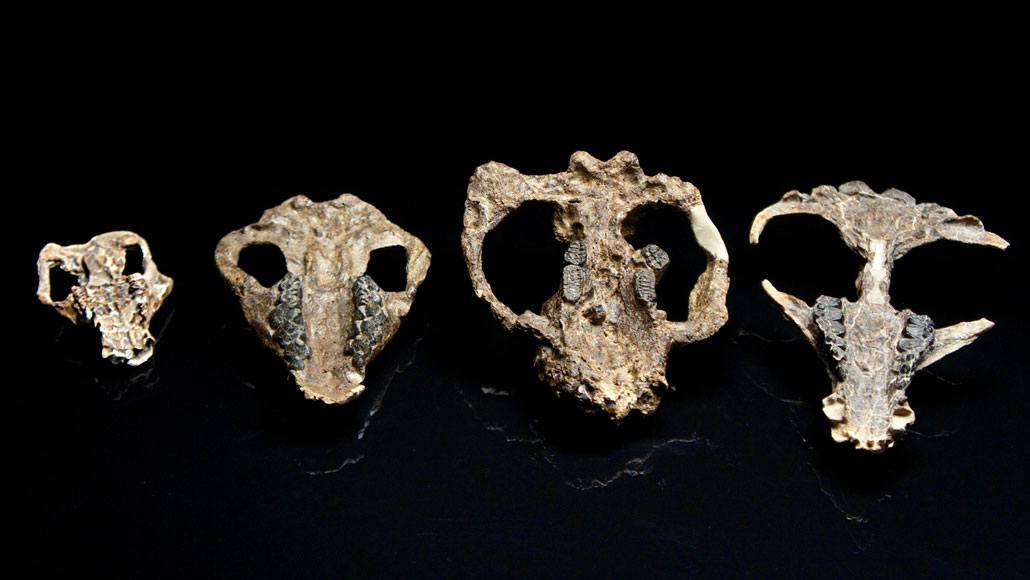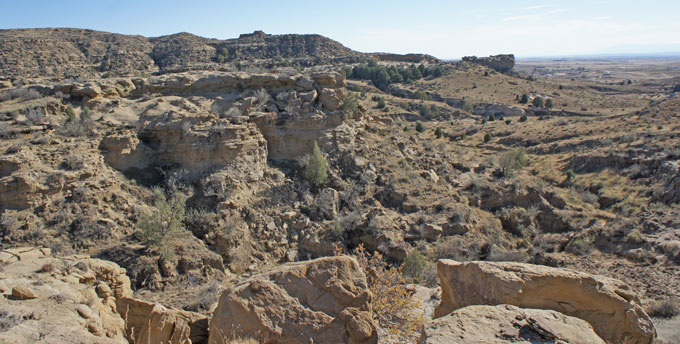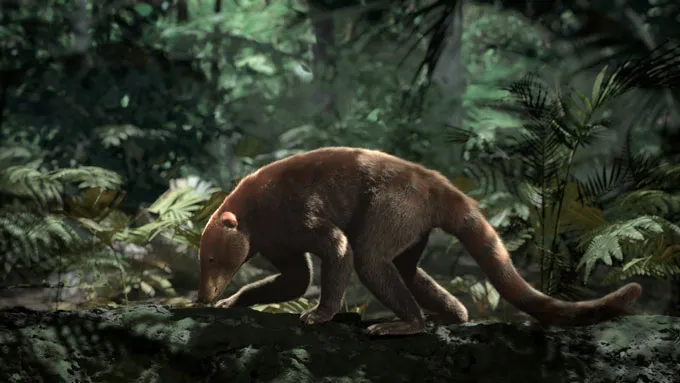
Scientists have found 40 mammal skulls (a selection shown) so far at Corral Bluffs, a fossil site in Colorado that’s helping reveal how mammals thrived after an asteroid strike 66 million years ago.
HHMI Tangled Bank Studios
- More than 2 years ago
Understanding how life rebounded after an asteroid strike 66 million years ago, which wiped out up to 75 percent of Earth’s species and ended the dinosaurs’ reign, has been hard. Fossils from the immediate aftermath are exceedingly rare (SN: 4/2/19). Now, though, a fossil-rich deposit in Colorado’s Denver Basin is offering paleontologists a window into how mammals, plants and reptiles recovered and flourished following the impact.
The find has allowed the scientists to piece together a detailed timeline of how mammals quickly diversified and grew in size once nonavian dinosaurs were out of the way. Within 700,000 years after the impact, for instance, some mammals had grown to be 100 times as heavy as the original survivors, researchers report online October 24 in Science.
“This is one of those discoveries all paleontologists dream of,” says Steve Brusatte, a paleontologist at the University of Edinburgh who was not involved in the research. “With a snap of a finger, mammals took over from the dinosaurs. More than 150 million years of dinosaur dominance was ended, just like that, and our ancestors took over.”

The Corral Bluffs site in the Denver Basin is the only known locality in the world to have numerous fossils of animals and plants representing a whole series of time slices in the 1 million years following the Cretaceous–Paleogene, or K–Pg, extinction.
Over the last three years, a team led by researchers at the Denver Museum of Nature and Science has uncovered more than 7,000 fossils there. These include 233 kinds of plants and 16 species of mammals — among which are the earliest known mammals to reach relatively large sizes as they evolved and filled ecological roles previously occupied by dinosaurs (SN: 1/25/17).
Despite a century of searching, the site had previously yielded few fossils — until paleontologist Tyler Lyson realized in 2016 that bones were preserved inside nodules of rock called concretions, rather than visible among the surface rocks.
That eureka moment allowed his team to “crack the code” of discovery there, Lyson says. “That was the real game-changing moment when I broke open the first concretion and saw a mammal skull staring back at me.”
By comparing plant and animal fossils with data on precise dates, the researchers have puzzled together the story of what happened at Corral Bluffs 65 million to 66 million years ago. Following the global devastation wrought by the asteroid impact, ferns and palms dominated, but were slowly replaced by forests with a much greater diversity of trees.
Mammals took a little while to recover, but then swiftly diversified into a variety of forms and body sizes. The biggest initial survivors of the impact weighed just 500 grams, about the size of a rat. But in layers of rock dated to just 100,000 years later, raccoon-sized mammals weighing up to six kilograms appear, Lyson says, not too far off from the maximum size mammals had reached before the mass extinction.

A lack of large predators in the post-impact world — as well as an explosion in plant diversity, offering a wider variety of better food sources — may be what allowed some mammals to reach 25 to 30 kilograms, such as beaver-sized Carsioptychus, by 300,000 years after the impact.
By 700,000 years in the same rocks that the earliest known members of the legume, or bean, family of plants are found, mammals of nearly 50 kilograms appear, such as wolf-sized Eoconodon.
Aside from the sheer number of fossils and different time slices revealed at Corral Bluffs, it was the number of mammal skulls — at least 40 so far, Lyson says — that astounded Brusatte. Skulls are usually very rare and mammals from around this time are typically “known just from teeth, and maybe a few bones here and there,” he says.
Brusatte is working on a site in New Mexico that is one of very few others with similarly aged vertebrate fossils. Though those fossils are less complete, they also point to a rapid recovery and diversification of mammals after the impact. “Different areas are giving the same signal; that tells us that it’s probably true,” he says.
While many mammals before the impact were from long-extinct subgroups, placental mammals, the young of which develop in a womb, came to dominate afterward, making up 95 percent of the roughly 6,500 mammal species alive today. “This is the best record to my knowledge on Earth that shows the recovery of terrestrial biotas after the K–Pg extinction,” says Jin Meng, a paleontologist and expert on dinosaur-era mammals at the American Museum of Natural History in New York City. “The study shows at least part of the earliest record, part of the trunk, of the placental mammal tree of life.”






